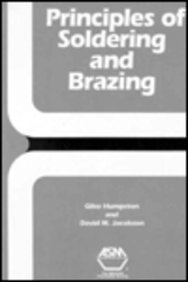Pub
1 total work
Principles of Soldering and Brazing
by Giles Humpston and David M. Jacobson
Published 1 January 1993
Improve your current joining processes Examine new techniques for unique applications Accurately troubleshoot joining problems Select the best joining method for specific needs Includes separate bibliography. This detailed, yet easy-to-understand ASM book critically examines the key physical principles of soldering and brazing, and explains their relevance to making jointsuproviding you with new insights. The relationships between processing conditions, filler materials, base materials, joint geometry and their influence on integrity are thoroughly explained and illustrated. By understanding these principles, you will know what materials and processing conditions to use and how to achieve the best joints. In addition, a special chapter is devoted to case studies of problem solving and process development. You will see prime examples of how to develop effective soldering and brazing solutions and identify failure modes. Equilibrium phase diagrams illustrate the metallurgical reactions and chances in physical properties that take place during joining.
When not available, a methodology for determining an alloy systemAs critical characteristics enables you to specify the best filler for a particular application. In addition, the book covers the latest developments in joining, including composite solders, diffusion soldering and brazing, and advances in techniques for joining non-metals. Contents: Filler Alloys and Their Metallurgy Applications of Phase Diagrams to Soldering and Brazing The Role of Materials in Defining Process Constraints The Joining Environment Assessment of Joining Quality Characterization and Process Development in Soldering and Brazing: Selected Case Studies.
When not available, a methodology for determining an alloy systemAs critical characteristics enables you to specify the best filler for a particular application. In addition, the book covers the latest developments in joining, including composite solders, diffusion soldering and brazing, and advances in techniques for joining non-metals. Contents: Filler Alloys and Their Metallurgy Applications of Phase Diagrams to Soldering and Brazing The Role of Materials in Defining Process Constraints The Joining Environment Assessment of Joining Quality Characterization and Process Development in Soldering and Brazing: Selected Case Studies.
